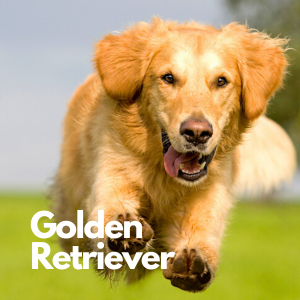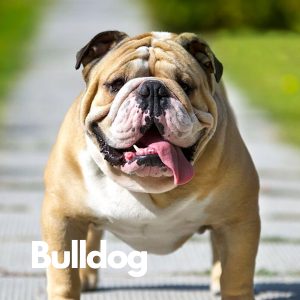
Sporting
40-50 lbs.
18-22 in.
12-14 years
1. Key Characteristics of English Springer Spaniels
English Springer Spaniels are medium-sized dogs with a long overcoat and soft undercoat.
Their coloring is limited to black or liver with white markings, white with black or liver markings, blue or liver roan, and a tricolor of black, brown and white.
This breed had docked tails in the past. However, it’s becoming more common to leave the tail intact. Tail docking is not necessary, so please consider talking to a breeder who is willing to leave the tail as is.
2. Where English Springer Spaniels Came From
The first reference to spaniels (“spanyels”) dates as far back as the 1500s, but specific breeds of spaniels did not emerge until 1800.
English Springer Spaniels were defined as a breed in the 1880s. They are descended from the Norfolk Spaniel — a dog bred extensively by the Duke of Norfolk. The name changed in 1900 to “Springer.”
They are closely related to Cocker Spaniels, who were defined separately by only one characteristic: size.
In fact, it was once true that Cocker Spaniels and English Springer Spaniels could be born in the same litter — until the separation of the breed in the 1880s by the American Spaniel Club. That organization set the breed standard and determined that any spaniel over 28 pounds was a Springer.
This dog was bred for hunting, specifically flushing and retrieving. The name “Springer” comes from the dogs’ ability to spring prey from the brush.
Even though they are British dogs, English Springer Spaniels were not recognized in England until 1902.
Interestingly enough, while it was the American contingent that separated the Springer from the Cocker, the American Kennel Club (AKC) didn’t recognize the English Springer Spaniel until 1910.
3. How Friendly Are English Springer Spaniels?
English Springer Spaniels are cheerful and energetic; however, they can be difficult to train. Their energy makes them excitable and eager — a good characteristic in a gun dog, but not so helpful for a family pet.
Don’t let this deter you from adding one of these fantastic dogs to your family; just consider your family or individual needs before selecting a companion animal.

4. Is This the Right Dog for You?
Exercise Needs
VERY HIGH: This is the exact opposite of a lethargic dog! English Springer Spaniels need lots of physical and mental stimulation every day to satiate their instinctive need to hunt.
These dogs need a great deal of outdoor time. A family or individual who is comfortable having the dog in the house but with access to a sizable backyard would be the ideal match.
Plan on an hour (at the very least!) of exercise every day, preferably in different environments. These dogs won’t be satisfied with just a short walk around a city block twice a day.
Grooming Needs
MEDIUM: The English Springer Spaniel has a medium to long overcoat with a soft, fluffy undercoat.
In addition to teeth and ear maintenance, clean and brush your dog regularly to prevent painful matting and ensure the dog is comfortable. English Springer Spaniels are not low-maintenance in this regard.
Note that dogs bred from field lines have a thinner coat than those bred from show lines.
Health Problems
MEDIUM: Illnesses that can crop up in the English Springer Spaniel include:
- Otitis externa (ear infection)
- Canine hip dysplasia
- Progressive retinal atrophy
- Elbow dysplasia
- Ectropion/entropion (turning out or in of the eyelid)
- Phosphofructokinase deficiency (exercise-induced muscle cramps and weakness)
- Skin fragility
- Gastric torsion
And there’s one more: rage syndrome.
On this last one, let’s be clear: Rage syndrome is very rare. It happens when a normally docile dog suddenly becomes violently aggressive with no warning. The rage will be completely out of character for the dog.
Dr. Lyn Johnson, DVM, believes that most dogs with this rare but serious problem are displaying severe dominance aggression. For further information, see Dr. Johnson’s fascinating article on the subject.
Most, if not all, of these problems can be avoided by working with a responsible breeder. As is the case with most purebred dogs, these issues are primarily genetic.
More Stats About English Springer Spaniels
| Friendliness | ★★★★★ |
| Ease of Training | ★★★★★ |
| Barking/Howling | ★★★☆☆ |
| Shedding | ★★★☆☆ |
| Tolerate Being Alone | ★☆☆☆☆ |
| Very Good With Kids | ★★★★★ |
Watch this English Springer Spaniel enjoy an epic snow day:

5. How to Adopt an English Springer Spaniel
Check rescues and adoption resources first! Even purebred animals can end up in shelters. Try Petful’s adoptable pets search tool.
If you go with a breeder instead, make sure to ask for health clearances from the puppy and the puppy’s parents to ensure that you’re bringing home a healthy dog. And watch out for any signs that these breeders are running a puppy mill.
References
- “English Springer Spaniel.” American Kennel Club. https://www.akc.org/dog-breeds/english-springer-spaniel/.
- “History of the Breed.” English Springer Spaniel Club. http://www.englishspringer.org/breed-history/.
- “About the Breed.” English Springer Spaniel Club. http://www.englishspringer.org/about-the-breed/.
- “How to Groom and Care for Your English Springer Spaniel.” English Springer Spaniel Club of Canada. https://www.esscc.org/grooming–care.html.








